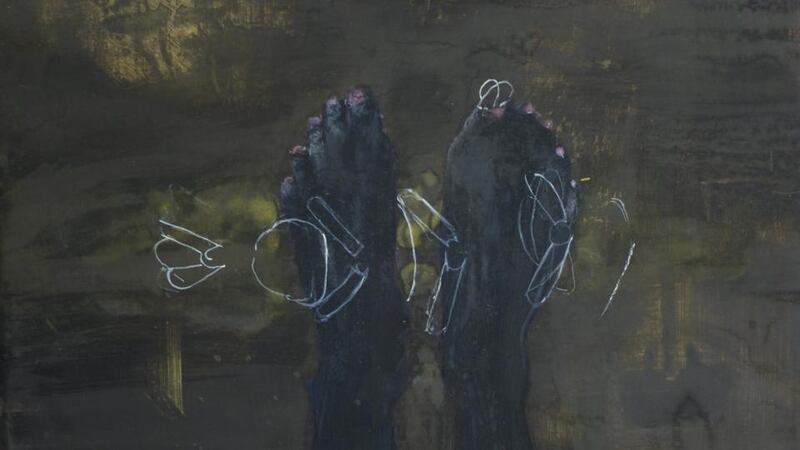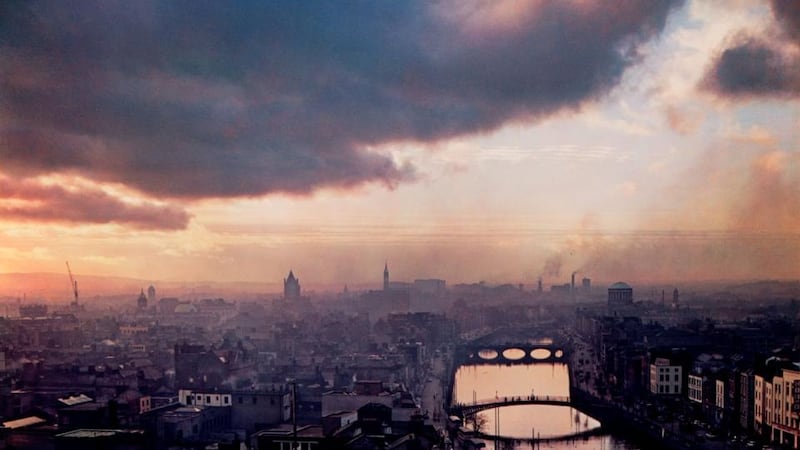Second Sight
Imma, Dublin
****
Second Sight marks the second installment of the phased donation of David Kronn's extensive photographic collection to the Irish Museum of Modern Art (Imma).
There are 50 works in this batch and eventually the museum, and its visitors, will acquire close to 600 works, spanning the history of photography. It’s not often that a single donor transforms the substance of an institutional collection, but Kronn is in the process of doing just that for Imma’s photography holdings.


He was born in Dublin, studied medicine at Trinity and has been based in the US since 1990, where he practices in medical genetics and paediatrics.
Photography is a passion. His taste is almost bewilderingly wide. True, in line with his professional specialty, he likes photographs that feature children or young people, and there's a rich strand of those in his collection. Hence the presence of a classic such as the great Japanese photographer Daido Moriyama's Boy with a Squint in the current show. Kronn also likes works that explore or challenge the technical nature of the medium.
Imma’s first show of his collection, in 2011, featured works drawn exclusively from it. This time the net has been cast a little further, encompassing other photographs in the museum’s collection, and some terrific juxtapositions ensue.
A really good display of John Hinde’s picturesque postcard images, with their heightened, Technicolor quality, share a space with Harry Callahan’s entirely accurate but comparatively downbeat photographs from the late 1970s.
Hinde’s photographs were carefully planned, staged and engineered. They were set up like film sets. There’s a running dialogue throughout the show between photographs that are consciously constructed in a comparable way and the kind of street photography encapsulated in Henri Cartier-Bresson’s notion of “the decisive moment”.
Several images from Doug DuBois's project My Last Day at 17 feature. Made over several years, they are for the most part elaborately designed, often staged or restaged set-ups, made with the co-operation of the teenagers, from Russell Heights in Cobh, whose lives they explore.
The teenagers are, in a sense, performing the role of being themselves. Artificial lighting, acting and sometimes extensive post-production – a single large-scale file can entail something like 30 hours work on the computer, DuBois noted at the time – all go into the mix to make a finished photograph.
Does that make it less authentic, or true, than Martine Franck’s spontaneous street portraits of Tory Islanders? Franck, who died just a couple of years ago, was a celebrated documentary photographer. She was understandably unhappy about being overshadowed by Cartier-Bresson, her husband from 1970 until his death in 2004, but she was an exemplary exponent of the kind of photography that’s long been synonymous with his name.
A photographer is almost always making an image as much as taking a photograph, and this is true of Franck, and indeed another featured name, Evelyn Hofer, who also made an important body of work in Ireland. Some fine examples of these are on view. They and DuBois take different approaches, but they are all trying to arrive at truthful images of a complex reality.
One of the highlights of Second Sight is a group of works by Moriyama, who is best known for documenting the seedier side of big city life, especially in Tokyo. You could say he tried to do away with artifice as much as possible, capturing off-balance, grainy, contrasty, oblique and fragmentary images. But think about it for a moment and it's clear that his apparent lack of artifice is no such thing; it is a style in itself, and one that produces great results.
Moriyama is open about his personal influences (William Klein for one) and he has been very influential in turn, not least in anticipating the kind of casual candid photographs endlessly churned out by mobile phones. Incidentally, he happened to take a photograph of a stray dog, and was then drawn to photograph dogs again and again, so that they became something of a pictorial alter ego for him. That first, iconic image, of a tough, slightly menacing but also unmistakably vulnerable animal, is included in Second Sight. Until Nov 9
Interplay
Nag, Francis Street, Dublin
***
Working in conjunction with an advisory panel, Mark St John Ellis is an extremely thoughtful, perceptive curator, especially good at nurturing younger artists of real substance, and his basement exhibition space, below the Cross Gallery on Francis Street, is a hidden gem.
Its name, Nag, is simply an acronym for new art gallery. It consists of two modestly sized rooms, impeccably and neutrally finished, with an effective lighting system, and each exhibition is a carefully considered installation in its own right.
Welsh by birth, Jenkins completed an MFA at NCAD in Dublin and his post-grad exhibition was impressively accomplished. He’s now based in Australia.
The Interplay of his exhibition title is the interplay between blocks of colour and clusters of incisive, containing lines. Music comes to mind. The mood is cool but energetic. There's a calculated instability to the angular arrangements of interlocking, overlapping lines; a dynamism.
The surfaces bear traces of layers of revisions, a sense that amorphous, free-flowing paint has been provisionally corralled and contained by the tangle of sharp lines. Colour is occasionally pushed just beyond harmonic combinations, adding to an edgy mood. Until Sep 20
Four Artists
Cross Gallery, Francis Street, Dublin
****
It's a separate gallery, but the Cross's current show, an exchange with Galerie Maurits Van De Laar, in The Hague, complements Jenkins well.
Each artist uses distinctive modes of pictorial narrative. Rens Krikhaar atmospherically revisits episodes and figures from Holland’s 17th and 18th century maritime history.
Justin Wijers makes coloured drawings in a naive manner based on images of suffering and violence found on the internet.
Claire Carpenter’s dreamy, muted paintings mostly have an underlying air of unease and Simon English’s elegantly retrospective vignettes hinge on arrivals, journeys and departures, with sections of handwritten text.












